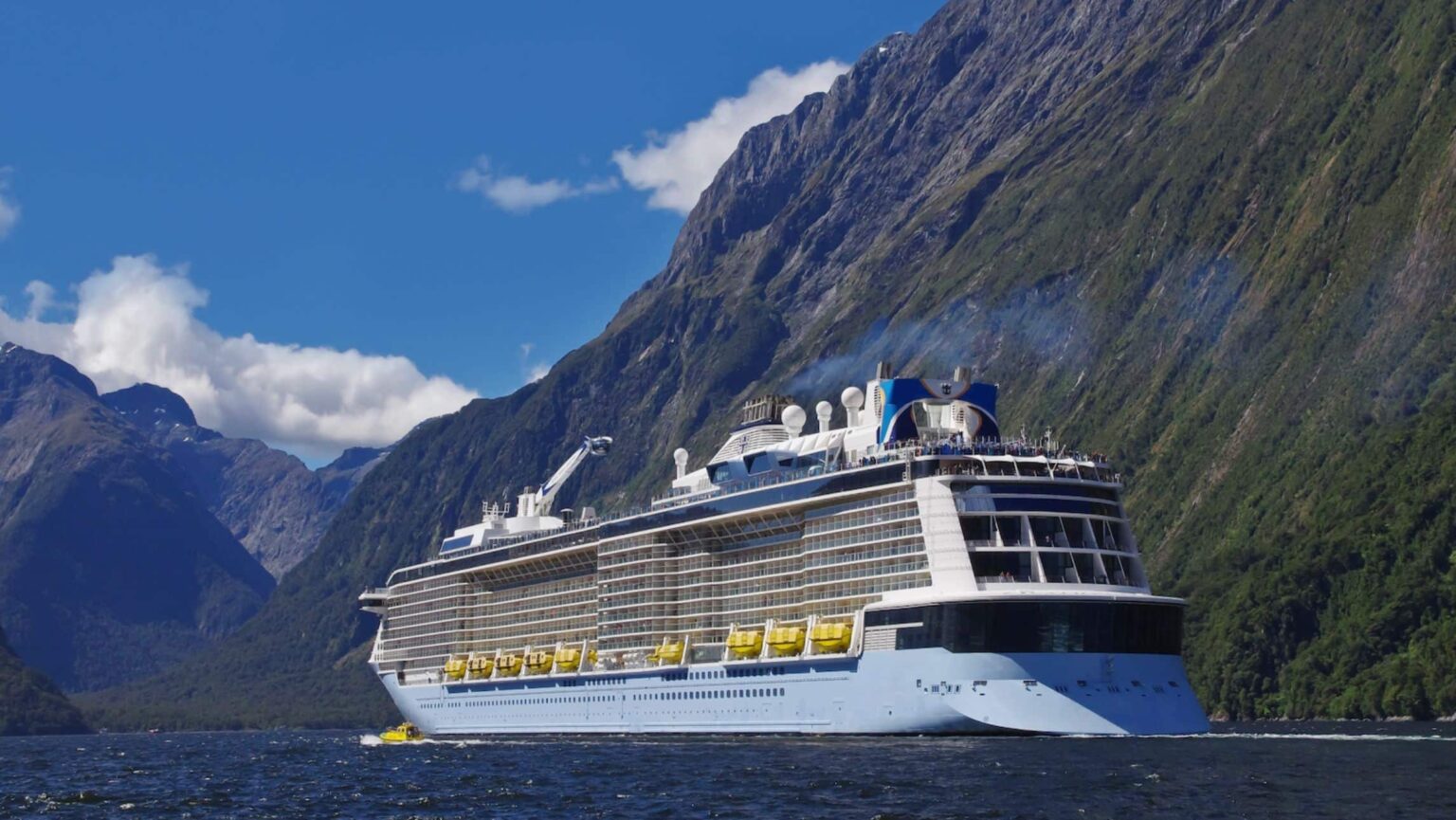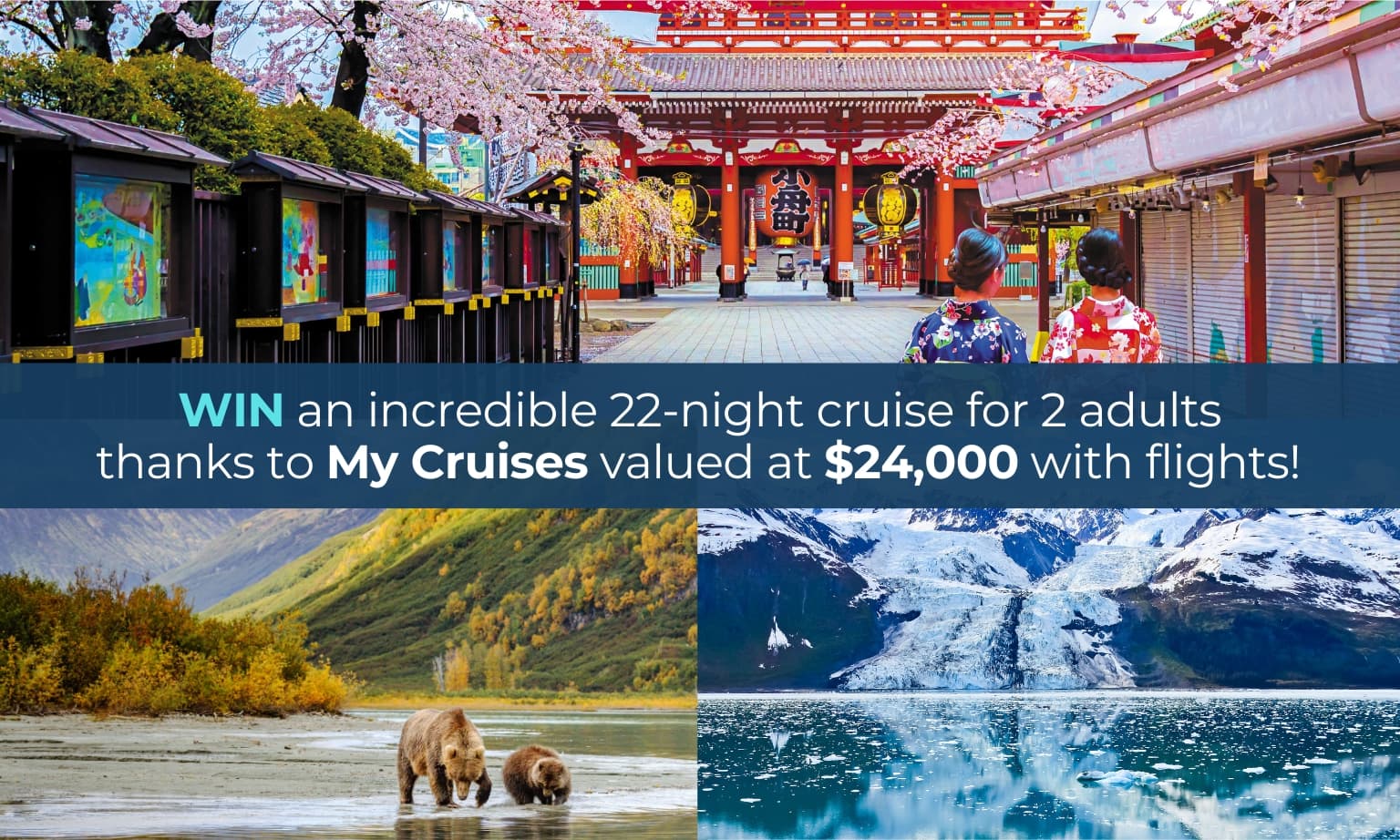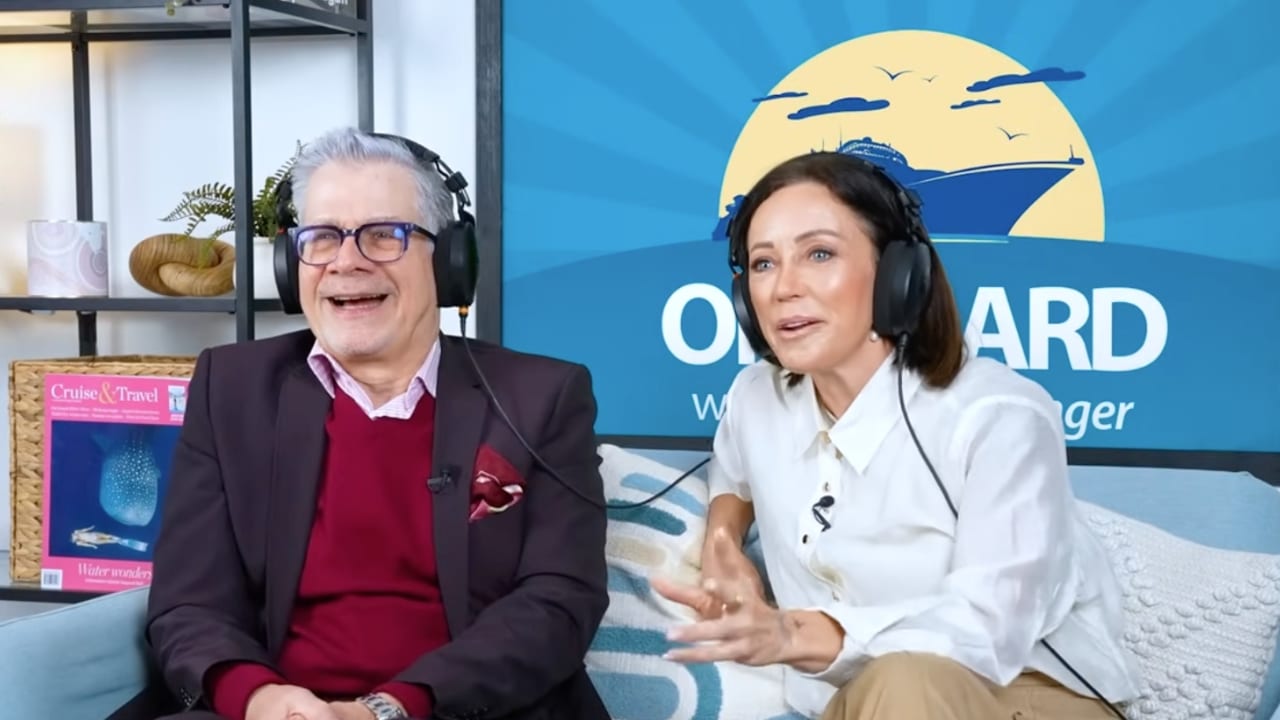The New Zealand Cruise Association has launched the country’s first-ever National Cruise Strategy – and revealed that the government is looking at a plan that involves a blanket ban on all cruises in Milford Sound.
The plan, from a multi-agency group called Milford Opportunities created to study long-term solutions for the popular area, has a “medium likelihood” of going ahead but would have a high impact, according to the association’s strategy document.
Milford Opportunities masterplan proposal outlines a plan to “prohibit cruise ships from entering Milford Sound Piopiotahi as it is causing visual impacts that are not in keeping with the beautiful natural setting and intent of the vision of the plan.”
The New Zealand Cruise Association revealed to Cruise Passenger that the proposal is currently under consideration by Tourism Minister Matt Doocey.
Jacqui Lloyd CEO of the New Zealand Cruise Association: “The NZ industry has been aware and engaged with Milford Opportunities since the masterplan was released.
“Our key messages and submissions to Milford Opportunities have emphasised the real possibility of NZ itinerary changes, the most obvious being the removal of the lower South Island from itineraries and the resulting economic impact on regional New Zealand. Milford Opportunities has been presented to Ministers Doocey and Potaka and we await their response.”
Milford Sound is an extremely popular scenic cruising spot, often a highlight and main attraction for both family and luxury cruise itineraries.
Cruise ships being unable to visit Milford Sound and the surrounding areas would have a profound impact on both the structure of New Zealand cruise itineraries and the passenger demand for them. It would also have a serious impact on Australia’s attempts to attract overseas cruise lines to homeport ships in the region.
US lines have already said high costs and over-regulation are key reasons for not increasing ship visitation to Australia and New Zealand, and the area is facing a 30% drop in cruise capacity in the next two years as it battles the lower costs and higher spending of US passengers in the Caribbean and other areas.
In a table outlining risks to New Zealand cruise in the newly formulated strategy the risk of “Milford Opportunities Project affects a blanket ban on a cruise” is assigned an impact of ‘high’ and a likelihood of ‘medium’.
Despite the Milford Opportunities proposal, the NZCA is feeling very positive about having a coherent cruise strategy in place for the first time. it has set a $1 billion revenue target from cruises by 2040.
Lloyd said: “The strategy aims to bring everyone together for the growth and management of the sector, which involves many different players. We need a unified plan to guide the future of cruises in New Zealand.
“Regularly reviewing and adjusting this strategy will be crucial to navigating unexpected changes and ensuring continuous improvement.”

Is there a plan for over-regulation for cruise in Milford Sound?
Over-regulation is commonly cited by cruise lines as an obstacle to running profitable operations in New Zealand. This issue spiked recently when customs increased border processing fees specifically for cruise passengers.
Lloyd says that engagement with government stakeholders will be a priority moving forward.
“Engagement with Government Stakeholders is one of our core priorities. There is a need for better alignment with the industry, destinations, other stakeholders, and New Zealand tourism agencies to better engage with the government. It’s clear there needs to be a whole-of-government view on collective costs and regulations across the New Zealand tourism sector, including cruise. We are already working with key partners to address this.”
What about the biofouling?
New Zealand has also experienced issues over the past two seasons due to biofouling regulations leading to several cruise ships being turned away from entering the country’s national parks.
Lloyd says this will be tackled through infrastructure, although it is yet to be directly addressed.
“We haven’t gone through to complete action items yet, but Biofouling, etc is within our infrastructure and government relations priorities. Changing regulations takes time, however, working with innovators on other solutions can be a shorter-term action.”
The NZCA Aspirational 2040 Goals
The cruise strategy outlines the below goals for 2040.
- Economic Goal: $1 billion cruise expenditure contribution by 2040.
- Environmental Goal: Net carbon-zero tourism supply chain by 2040 and by 2050 for cruise lines.
- Visitor Goal: 90 per cent of international cruise visitors are satisfied with their experience in New Zealand, and New Zealand regions have a 90 per cent average NPS.
- Community Goal: Cruise tourism supports and benefits iwi, and 90 per cent of New Zealanders think cruise tourism is good for New Zealand.
Tansy Tompkins, the Chair of NZCA, says: “The industry has shown remarkable resilience in the post-Covid tourism recovery and is now one of the fastest-growing travel sectors globally.”
“But, despite a robust 2023/24 season, New Zealand is anticipating a 15-20 per cent reduction for 2024/25 and beyond because of increased costs to operate, global competition, and geopolitical risks. This underscores the need for a long-term vision that aligns stakeholders, addresses emerging challenges, and ensures sustainable growth”
CLIA complements new NZ strategy
Joel Katz, president of CLIA Australasia said New Zealand putting together a cruise strategy is a big step forward for the industry.
“Cruise tourism is worth many hundreds of millions of dollars a year to the New Zealand economy, so adopting a comprehensive national strategy is vital to support its development in a positive and sustainable way. Thousands of New Zealand jobs are supported by cruise tourism, which spreads economic benefits far beyond the major gateways to reach regional destinations right around the country. New Zealand is also one of the world’s most rewarding cruise destinations and consistently rates highly among international visitors.”
“By taking a whole-of-government approach and adopting a national strategy to foster cruise tourism, New Zealand has an opportunity to strengthen its tourism economy and create lasting benefits for local businesses and communities. Overcoming regulatory complexities and high operating costs is essential if New Zealand is to fully benefit from the potential of cruising. The cohesive approach outlined by the NZCA – involving government, industry, destinations, and other stakeholders – is a vital step towards long-term prosperity and positive tourism management in New Zealand.”
“CLIA is pleased to partner with the NZCA to deliver an economic impact analysis for New Zealand later this year, which will support informed decision-making and build awareness of the value of cruise tourism to local employment and the national economy.”









I have cruised this waterway on 3 occasions and have found it spectacular, but I don’t think the visual sight of a ship in the Sound is a huge problem when you compare the black exhaust billowing from the engines as we travelled though the Sounds. I thought this is not beneficial to the environment at all.
Once upon a time there were no cruise ships in Milford Sound. Then they used to offload and do daytrips but that was fraught with logistical nightmares. Now it’s a drive by shooting. A cruise ship blocks the Vista for the excursion boats like a wall. Progress comes with more environmental risks than the supposed revenues that are generated by cruising into the sound. Unless you have been intimately involved with the Sound (aa a tourguide) you are unlikely to appreciate the degradation that can occur from bio risks to the marine environment. I’m a cruiser but I’m also happy to see less ships.
Closing Milford Sound to cruise vessels will be the death nell of New Zealand tourism, I certainly won’t be back spemding my hard earned Aussie dollars in a country that is against tourism.
We might as well close the Great Barrier Reef to New Zealanders .
Get real NZ Government.
I am a New Zealander and have cruised around NZ 6 times now. Many people ask me, why cruise around your own country. My reply, because I love cruising into Milford Sound. It’s breath-taking.
If the Government close down cruising to this part of the World they are CRAZY!
It’s only for 6mths of the year and it would be selfish of the Government to deny any Cruise Ship entry to what I think is one of the BEST! experiences of any cruise to NZ.
(+ The Park Ranger gives one of the best commentaries, and each cruise I add to my knowledge base, and learn something new about this beautiful part of NZ)
Remove Milford sound from NZ cruises, I cruise elsewhere, there financial loss. So short sighted, part of a global anti tourism sentiment from governments who don’t want tourists but still expect to make revenue. Go figure ♂️
Seems like this will have more of an impact on New Zealand tourism and economy and hasten the Cruise Lines to abandon both New Zealand and Australia.
If there are cruise ships how is that causing visual impacts that are not in keeping with the beautiful natural setting? More often than not showing the difference in size compared to the area enhances the views. if they are banned then who will this please if no one is allowed to view the area?
Just read the following, how ridiculous.
“prohibit cruise ships from entering Milford Sound Piopiotahi as it is causing visual impacts that are not in keeping with the beautiful natural setting and intent of the vision of the plan.”
Sailed Millford sound myself.It should be restricted by size of cruise ship.max 300 guest vessel.
Seeing cruise ships in the sound makes the scale of the landscape more impressive.
The N.Z.C.A should ask the N.Z. Government to impose a ban on “pleasure” Helicopter flights over glacier areas. At Franz Josef, our ‘walk in’ from the bus park area and eventual arrival at the glacier, was ruined when the serene silence was shattered by the constant “Whoop Whoop” of helicopters flying people in or even passing over such areas. Search and Rescue helicopters would be exempt from this.
The Helicopters were both a visual and audible blot on wilderness / Natural area.
On my tour most other visitors also complained about this “audio – visual” intrusion!
Editing needed for over regulation paragraphs. It should be Customs not customers in the 1st paragraph.
Could your articles be printed in a darker colour than light blue? It is a very difficult colour to read on the white or mauve background.
It is also a difficult colour for b/w printers to copy.
I do not have a visual problem, just aged. We should all try to make things easier for those with visual problems and the elderly as they are your readers and cruisers as well.
Thank you.
Just how stupid an idea is the canning of Milford Sound to cruise ships??? The people have gone totally mad. If you want to kill your #1 export industry in tourism let crazy ideas like this surface.
If no Milfird then ships will not go to Duneidn or Christchurch and maybe NZ completely, totally stuffing up the southern cruise industry.
Short-sighted people should never have a place to promote such rubbish.
For over 250 days each year no ship enters Milford.
Go figure and write to the minister.
As a direct descendant of Captain John Grono who discovered Milford Sound I oppose the cancellation of cruise ship visits to Milford Sound. Economically it is a backward step for NZ. Baring people from the ability to experience the awesomeness of the Sound’s natural beauty,flora,fauna and history is counterproductive. If it is hidden away ‘IT WILL BE
FORGOTTEN!’
Closing Milford Sound to the cruise industry will reduce the attraction of NZitineraries from Australia.
Not only will it take away a significant scenic cruising opportunity, but also increase the effective number of sea days crossing the ditch.
Wonder whether further development in the Invercargill region or an opportunity to visit Fiordland somehow would offset?
So does that mean all the resorts in Milford Sound will be closed down for the same reason?